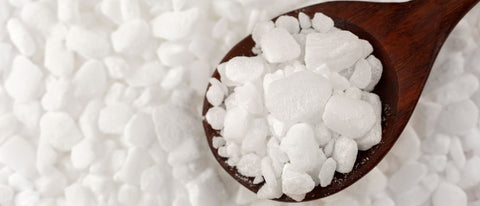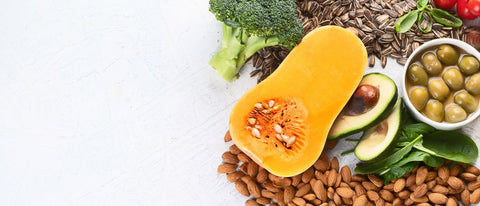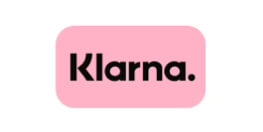
Florian ist aufgewachsen auf einem Bauernhof. Umgeben von Pferden, entdeckte er früh seine Faszination für diese majestätischen Tiere. Inspiriert von seiner reitbegeisterten Mutter, entwickelte er das Nahrungsergänzungmittel - Pferdegold. Seine tiefe Verbundenheit zur Natur und die leidenschaftliche Hingabe zu Pferden trieben ihn an, sein Unternehmen zu gründen.
Imagine that a tiny element could significantly influence your horse's well-being: selenium.
Although it is only needed in relatively small amounts, selenium is an invaluable component of horses' diet.
In Germany, where the selenium content in soils is often low, many horse owners quickly ask themselves the question: How much selenium does my horse need?
In this article, we highlight the diverse functions of selenium in horses, explore the symptoms of deficiency and overdose, and offer valuable tips for optimal selenium supplementation and feed selection.
Discover with us why selenium can keep horses in top shape!

Why is selenium so important for your horse's health?
Selenium is an essential trace element that plays a central role in your horse's diet.
It supports important body functions such as thyroid activity and the immune system, is crucial for muscles and protects cells from damage caused by free radicals.
Selenium also promotes efficient energy metabolism and contributes to the maintenance of cell integrity .
A balanced selenium balance is therefore essential for horses.
Persistent selenium deficiency can lead to muscle weakness and other health problems , while an overdose can also have negative effects, such as hair loss and hoof problems.
A selenium intake tailored to your horse's needs is therefore essential for its well-being and performance.
Your horse's daily selenium requirement
A horse's daily selenium requirement is an important factor for its performance.
In general, it is recommended that a horse should consume about 0.1 to 0.2 mg of selenium per kilogram of dry feed .
For an average 500 kg horse , this means a daily selenium intake of about 1.1 mg.
However, it is important to note that this requirement may vary depending on individual factors such as performance level, pregnancy in mares and other conditions .
However, the intake of selenium through feed is often insufficient , especially in regions where the soil is naturally low in selenium , such as in many parts of Germany.
This means that many horses cannot get the recommended amount of selenium from their forage and therefore additional supplementation may be necessary.
In addition, the need for selenium may increase when feeding unsaturated fatty acids, such as those found in linseed oil.
Vitamin E and selenium are closely related because selenium cannot function effectively in the body without vitamin E.
A deficiency in vitamin E can therefore also lead to an apparent excess of selenium , which in reality represents a deficiency in vitamin E.
When supplementing selenium, it is important to pay attention to the form and amount of selenium taken.
An excess of selenium, especially in the form of selenium yeast , can lead to symptoms of poisoning , since selenium in this form cannot be excreted effectively, whereas inorganic selenium such as sodium selenite is better excreted by the body.

Perfect for your horse: Pferdegold® supplementary feed!
These specially developed supplements support your horse's diet and provide it with natural nutrients. Made in Germany, grain-free and drug-free, with a 30-day money-back guarantee.
Try it now!Selenium deficiency in horses: How to recognize the symptoms
Selenium deficiency in horses can manifest itself in a variety of symptoms that are often difficult to detect.
Here are some of the most common signs of selenium deficiency :
-
Muscle weakness and stiffness: Horses can become stiff, especially in the hindquarters, which can lead to movement disorders.
-
Poor performance: General fatigue and a decrease in performance are typical symptoms.
-
Impaired thyroid function: Selenium deficiency can lead to problems with the thyroid, which can manifest in symptoms such as lethargy, poor hair and coat condition , and fertility problems .
-
Skin and coat problems: Hair loss, dull coat, or a sudden tendency to skin problems such as eczema may indicate a selenium deficiency.
-
Altered hoof growth: Selenium deficiency can cause changes in hoof growth, which may manifest as ring-shaped constrictions or other abnormalities.
-
Selenium deficiency is particularly critical in foals: In severe cases, foals with selenium deficiency can develop significant health problems that may require intensive veterinary treatment .
Problems sucking the udder and lameness are typical symptoms that may indicate a serious selenium deficiency.
The diagnosis of selenium deficiency should not be based solely on symptoms. A blood test can help further determine selenium status.
If you suspect a selenium deficiency, you should always consult a veterinarian to ensure appropriate treatment.

The risk of white muscle disease in foals
White muscle disease (also known as nutritional muscular dystrophy ) in foals is a serious disease caused by a selenium deficiency.
It occurs particularly in newborn foals when they were inadequately supplied with selenium in the womb. Symptoms of the disease include:
-
General muscle weakness: Affected foals have difficulty suckling independently and often cannot stand for long periods.
They typically experience difficulty swallowing and shortness of breath.
-
Movement problems: Foals may sprain or be lame, and the neck muscles may appear stiff.
-
Discolored urine: The urine of affected foals is often brownish in color.
Treatment for white muscle disease usually begins immediately with an intramuscular selenium injection . If low vitamin E levels are detected, an oral vitamin E supplement is also administered.
Supportive therapies, such as administration of intravenous fluids or oral electrolytes, are often necessary.
Foals with this condition should be placed in a specialized veterinary clinic to ensure appropriate care.
With early diagnosis and treatment, most foals recover completely from white muscle disease.
How reliable is a blood test in diagnosing selenium deficiency in horses?
If you want to know if your horse is getting enough selenium, a blood test is a good place to start. Selenium levels in the blood should normally be between 70 and 200 µg/l .
If they are below this level, this could indicate a selenium deficiency. But be careful: blood tests don't always show the whole picture.
Therefore, there is debate about the reliability of these values, as blood only serves as a transport medium for nutrients, and the selenium level in the blood represents a snapshot in time. Around 40% of selenium is stored in the muscles, meaning that blood values do not necessarily reflect the horse's actual selenium status.
In addition to the blood count, it is wise to also analyze your horse's feed and consider its general health.
Sometimes the enzyme activity in the blood is also measured to get an even more accurate picture.
For a correct diagnosis and treatment of a suspected selenium deficiency, it is important to consider the individual needs of each horse and, if necessary, consult a veterinarian for advice.
To determine whether your horse is getting enough selenium, analyzing the feed ration is crucial.
Consider factors such as your horse's body weight, work performance , and age . A 600 kg horse needs about 1.2 to 1.8 mg of selenium daily.
Since hay and grass often do not contain enough selenium, especially in Europe, a supplemental source of selenium may be necessary.
A feed analysis provides information about the selenium content in the feed and helps you determine your horse's exact needs.
Selenium in horse feed: This is how much it really contains
It is not possible to say in general terms how much selenium is contained in different feedstuffs, as this depends heavily on the soil conditions.
It is generally known that hay and pasture grass in selenium-poor areas often contain too little selenium.
Therefore, it is important to choose feeds that meet your horse's selenium needs, especially in regions with low selenium levels in the soil.
Feeds that typically contain selenium include wheat, corn, and barley . These grains can help meet selenium requirements in adequate amounts.
However, it is advisable to determine the exact selenium levels of these feeds through analysis to ensure precise supplementation.

The interaction of selenium and vitamin E
Selenium and vitamin E make a powerful team in your horse's diet. These two nutrients work synergistically as antioxidants, protecting cells from oxidative stress.
They contribute significantly to muscle health, heart function, and strengthening the immune system . A deficiency in vitamin E and selenium can even lead to muscle loss and a weakened immune system.
For athletically active horses or horses under stress, a balanced supply of both nutrients is particularly important to ensure the horse's well-being and performance .
Selenium in abundance: The dangers of an overdose
When feeding your horse, it's important to pay attention to the selenium content. Long-term overdose can occur at more than 2 mg of selenium per kg of feed.
For example, a 500 kg horse with a daily intake of more than 22 mg of selenium would be at risk of selenium poisoning .
Acute poisoning occurs at even higher doses, such as a single ingestion of 3000 mg of selenium . Symptoms of selenium poisoning in horses include hair loss, hoof problems, and serious health problems such as colic.
The treatment of selenium poisoning in horses requires expert veterinary assistance.

Pferdegold® supplementary feed!
Pferdegold is a small family business from Bavaria with a big dream: to produce the best horse feed. We see ourselves as a family of equestrians who want to provide your horse with the ideal nutrition. 100% natural and perfectly tailored to your horse's needs.
Try it now!Germany and selenium deficiency: What's behind it?
In Germany, selenium deficiency in horses is a widespread problem, which is mainly caused by soil conditions.
The soils in many regions of Germany are low in selenium, especially in sandy, boggy and granite-weathered areas.
Germany as a whole is considered a selenium deficiency area, with selenium levels decreasing from north to south.
In addition, intensive agricultural use has led to a further reduction in the selenium content in the soil.
This leaching and acidification of the soil further exacerbates the selenium deficiency.
To counteract this deficiency, it is important to adjust the horses' feed accordingly and ensure a balanced selenium intake.
Conclusion
In summary, it's clear that selenium is a key element in your horse's diet. From muscle health to the immune system, selenium plays a key role in many areas.
It helps maintain balance in your horse's body and contributes to promoting vitality.
Finding the right balance is crucial because both a deficiency and an excess can cause health problems.
FAQ
Do pregnant or lactating mares need more selenium?
Yes, pregnant and lactating mares have an increased need for selenium.
This is particularly important because selenium deficiency during pregnancy can have direct effects on the health of the foal, including the development of white muscle disease in foals.
Therefore, special attention should be paid to selenium supply during these phases.
Is the selenium requirement higher in sport horses?
Selenium requirements can be increased in sport horses due to increased performance demands and stress. Adequate selenium status is important for the horse's muscle function, performance, and immune system.
Horses subjected to high levels of physical exertion can therefore benefit from an adjusted selenium intake.
When should you consider supplementing with selenium?
Selenium supplementation should be considered if selenium deficiency has been diagnosed or is at risk, such as in horses in areas with selenium-poor soils.
The amount of selenium in forage depends heavily on the soil. In Germany, many soils are classified as relatively low in selenium, which can often lead to selenium deficiency.
However, the decision to supplement selenium should always be based on a thorough analysis of the feed ration and a blood test and ideally in consultation with a veterinarian.
How do you recognize a selenium deficiency or selenium poisoning?
A horse with severe selenium deficiency often appears tired and weak, the muscles are tight and stiff, and hair loss and poor performance can occur.
An excess of selenium can cause symptoms such as ring-shaped constrictions on the hooves, hair loss and non-specific lameness.
In acute selenium poisoning, serious symptoms such as severe colic can occur.
If selenium deficiency or excess is suspected, a veterinarian should always be consulted.
What influences the amount of selenium in forage?
The amount of selenium in forage is influenced by the soil. In Germany, there is a north-south gradient in average selenium levels in soils.
The further north you are, the richer the soils are in selenium, and vice versa. Local influences from fertilization can also alter the selenium content in forage.
What role does vitamin E play in selenium supply?
Vitamin E and selenium are closely related because selenium cannot function effectively without vitamin E.
A deficiency in vitamin E can lead to high selenium serum levels, which can mimic a selenium excess when in reality there is a vitamin E deficiency.
It is therefore important to consider the entire balance sheet in order not to overlook any deficiencies.
IMPORTANT:
Pferdegold is not a substitute for veterinary diagnosis or treatment . The information contained in this article is for general informational purposes only and is intended to help improve your horse's well-being.
Pferdegold products do not treat or cure diseases , but rather support your horse in correcting nutritional deficiencies through targeted nutrient intake. However, they are not a substitute for professional advice from a veterinarian or specialist.
If your horse has any health problems , we strongly recommend consulting a veterinarian . Pferdegold assumes no liability for decisions made based on the information provided here.
Learn more about horse health and read the next guides!
- Feeding horses optimally and naturally » That's what matters!
- Muscle building in horses: nutrition , exercises & tips
- Vitamin E in horses » Everything you should know!
















